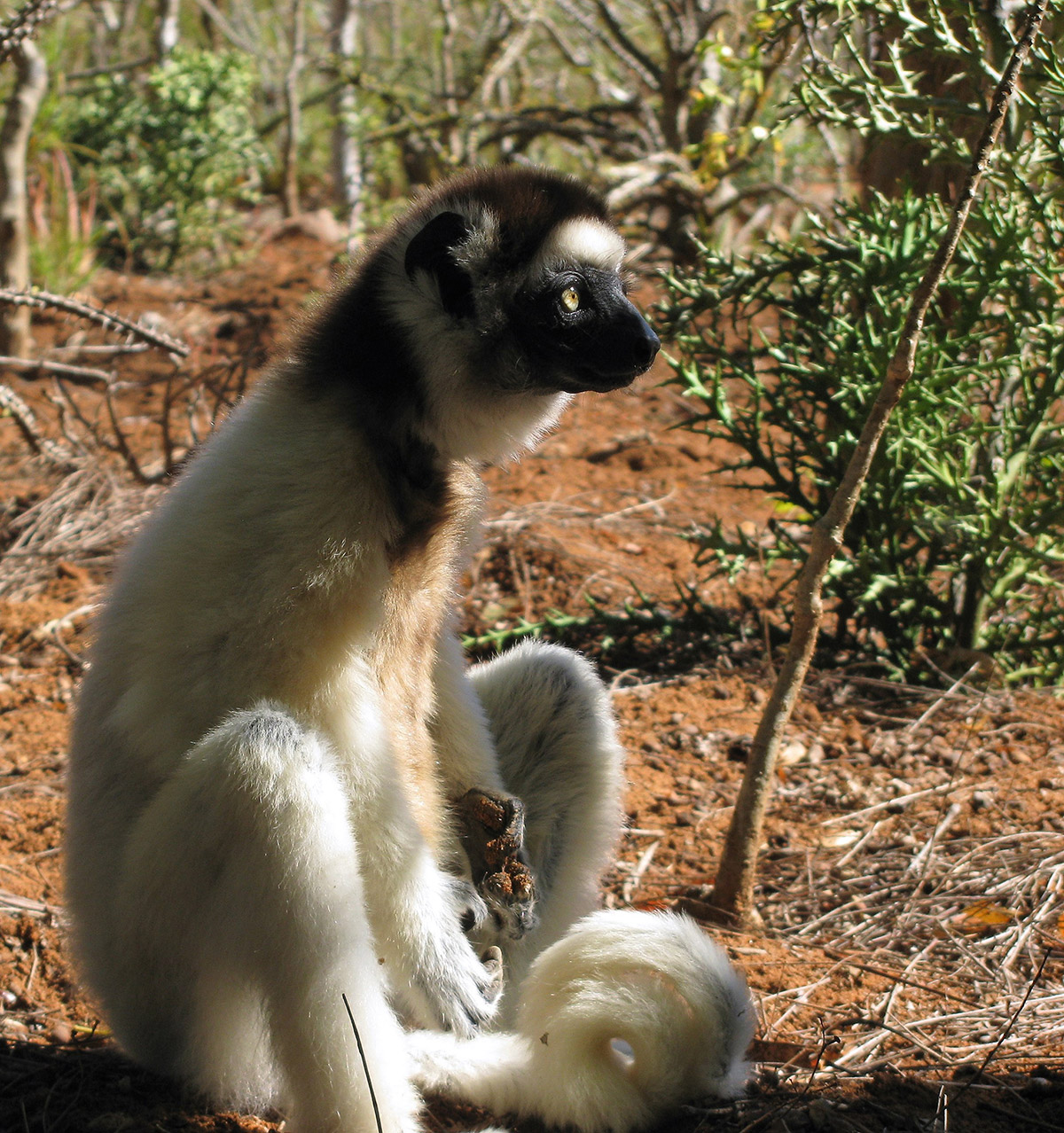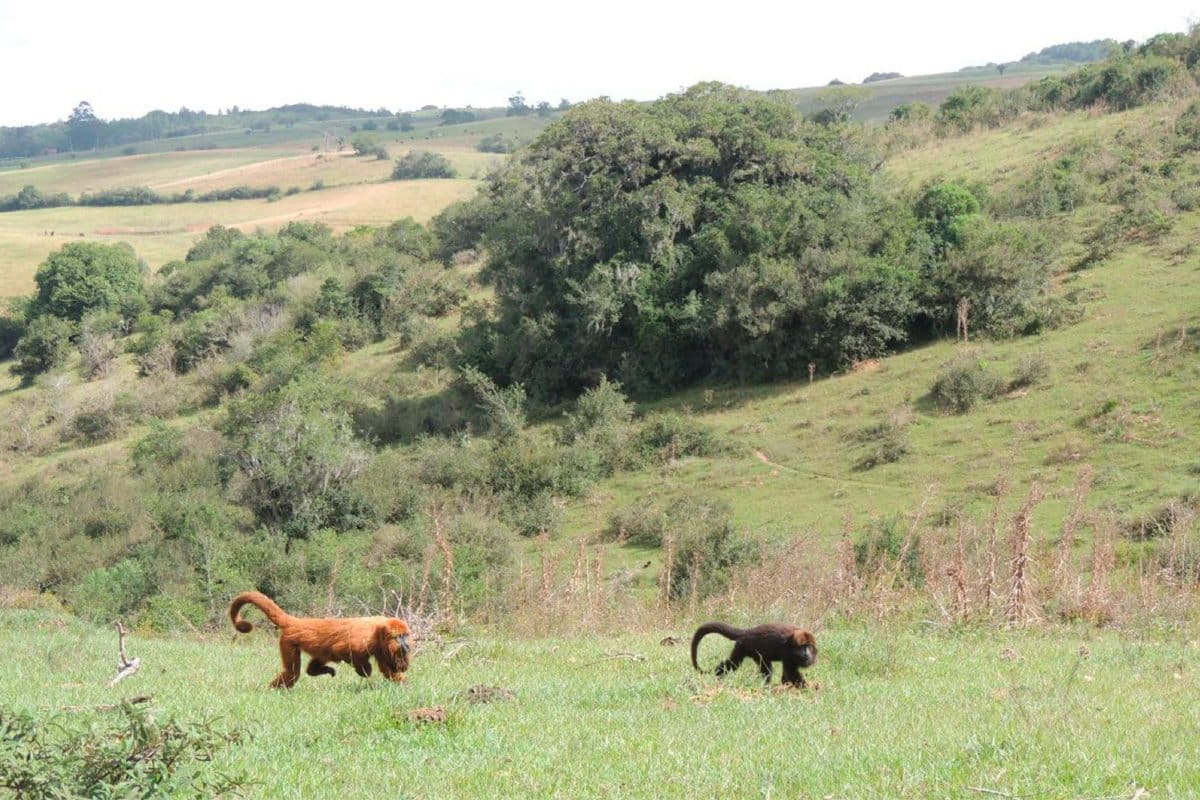- As deforestation and climate change alter rainforest habitats, monkeys and lemurs that normally live in trees are risking encounters with predators to spend time on the ground.
- Species with diverse diets, smaller body masses, and larger group sizes may adjust to terrestrial life more successfully than others.
- The huge international study drew from more than 150,000 hours of observations of 47 species in Madagascar and Central and South America.
Some primates spend their entire lives in trees. They avoid the ground, where preferred food is scarce and predators lurk. But deforestation and climate change are threatening their homes in the branches. Habitat loss has some primates swinging down to see what the ground offers, scientists reported recently in the Proceedings of the National Academy of Sciences.
The massive study included more than 150,000 hours of observations from 20 sites in Madagascar and 48 sites in the Americas. A global team of 118 researchers analyzed 34 years of field observations of tree-dwelling monkey and lemur species.
“We wanted to understand what factors were the most influential in increasing ground use” by arboreal primates, said Timothy Eppley, postdoctoral fellow at the San Diego Zoo Wildlife Alliance in California. Eppley led the study, and several of the co-authors credit his leadership for its success.

On average, primates in the study spent less than 5 percent of their time on the ground. It doesn’t sound like much, but any time on the ground is dangerous. Predators can strike in a matter of seconds, said study co-author Patricia Wright, a conservation biologist at Stony Brook University in New York. Even so, some animals take the risk.
The study revealed that species with certain social and physical traits may have an advantage. Primates with diverse diets and larger group sizes might adapt more easily to terrestrial life. So might animals with smaller body masses — an unexpected finding. Scientists are still working to understand why this is the case.
These findings offer a bright side to a difficult problem, said primate expert John Fleagle of Stony Brook University, who was not part of the team: “Even though habitats are disappearing, some [primates] can figure out how to deal with this new habitat that they’re suddenly finding below them.”

One disappointing finding was that primates stayed tree-bound near buildings and roads. Our infrastructure could inhibit primates from descending to ground, restricting their movements between patches of healthy forest and interfering with their ability to adapt, Eppley noted.
And some species may never adapt. Conservationists have discussed strategies to help them, such as building rope bridges to connect habitats. “It’s going to require us to become innovative and creative and thoughtful about how the animals think,” said Wright. “Not how we think, but how the animals think.”


Dozens of international scientists contributed field observations to the study. These passionate researchers spent weeks in forests, quietly scanning the treetops. “It’s like always being on the edge of my chair just waiting for something to happen,” said Wright. “[Animals] can do all kinds of strange things — and you never know when.”
The study included 47 distinct species. Scientists in the Americas observed monkeys, such as brown howlers (Alouatta guariba) in Brazil, Humboldt’s woolly monkeys (Lagothrix lagotricha) in Colombia, and white-faced capuchins (Cebus imitator) in Costa Rica. In Madagascar, they observed lemurs such as Verreaux’s sifaka (Propithecus verreauxi), southern bamboo lemurs (Hapalemur meridionalis), and ring-tailed lemurs (Lemur catta).
These diverse primates play critical roles in forest ecosystems around the world, Eppley said. They disperse seeds and pollinate trees; losing them would cause a cascade of negative effects.

Although the study suggests some species may adapt, deforestation and climate change are taking a rapid and extreme toll on the animals — and the dedicated scientists studying them. “These animals just don’t have any place to live,” said Wright. “It doesn’t hit home what’s really happening to the individual animals when they’re burning up in a fire and all their relatives are too. It’s horrible. I just wish that people could understand that.”
Header image: A Humboldt’s woolly monkey (Lagothrix lagotricha) explores the forest floor in Colombia. Photo credit: Rhett A. Butler
Citation:
Eppley, T. M. et. al. (2022). Factors influencing terrestriality in primates of the Americas and Madagascar. Proceedings of the National Academy of Sciences, 119 (42) e2121105119. https://doi.org/10.1073/pnas.2121105119
Elise Overgaard is a graduate student in the Science Communication program at the University of California, Santa Cruz. Other Mongabay stories produced by UCSC students can be found here.
